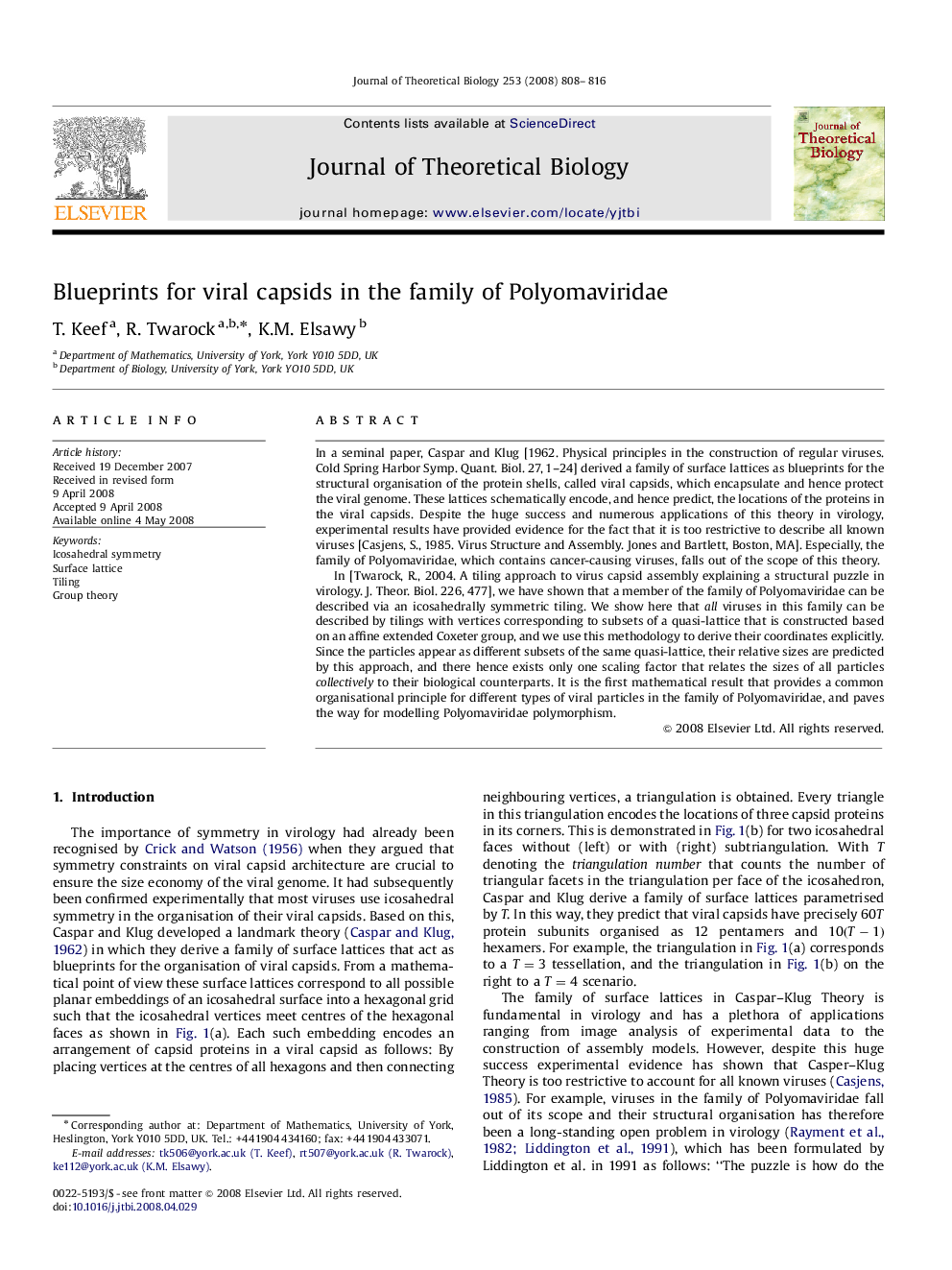| Article ID | Journal | Published Year | Pages | File Type |
|---|---|---|---|---|
| 4498328 | Journal of Theoretical Biology | 2008 | 9 Pages |
In a seminal paper, Caspar and Klug [1962. Physical principles in the construction of regular viruses. Cold Spring Harbor Symp. Quant. Biol. 27, 1–24] derived a family of surface lattices as blueprints for the structural organisation of the protein shells, called viral capsids, which encapsulate and hence protect the viral genome. These lattices schematically encode, and hence predict, the locations of the proteins in the viral capsids. Despite the huge success and numerous applications of this theory in virology, experimental results have provided evidence for the fact that it is too restrictive to describe all known viruses [Casjens, S., 1985. Virus Structure and Assembly. Jones and Bartlett, Boston, MA]. Especially, the family of Polyomaviridae, which contains cancer-causing viruses, falls out of the scope of this theory.In [Twarock, R., 2004. A tiling approach to virus capsid assembly explaining a structural puzzle in virology. J. Theor. Biol. 226, 477], we have shown that a member of the family of Polyomaviridae can be described via an icosahedrally symmetric tiling. We show here that all viruses in this family can be described by tilings with vertices corresponding to subsets of a quasi-lattice that is constructed based on an affine extended Coxeter group, and we use this methodology to derive their coordinates explicitly. Since the particles appear as different subsets of the same quasi-lattice, their relative sizes are predicted by this approach, and there hence exists only one scaling factor that relates the sizes of all particles collectively to their biological counterparts. It is the first mathematical result that provides a common organisational principle for different types of viral particles in the family of Polyomaviridae, and paves the way for modelling Polyomaviridae polymorphism.
